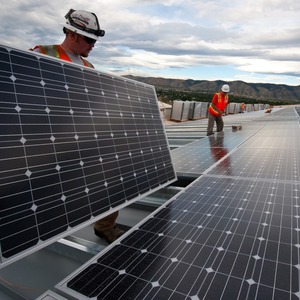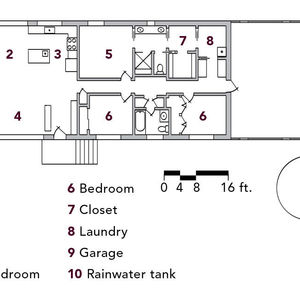
So, you are starting a new green building project and you’re wondering how to get your priorities straight among all the possible considerations for a high-performance home? How do you weigh energy efficiency, embodied carbon, indoor air quality, durability, comfort, convenience, and of course, cost. Though most of these aspects of a well-designed and built home are inter-related, there are always decisions to be made and trade-offs to consider. So the answers will always depend on who you ask. If you asked us, here are the answers you’d get.
Pete: consider the total environmental impact
We ask an awful lot of our buildings these days. But even scarier than what we ask of them is how often our clients know so little about the building they are about to pay for. We can offer up handy labels, such as green building, but labels don’t dig into priorities. In fact, the handy labels can distract from the hard work of setting priorities.
I teach a graduate-level green building course at Yale University. We spend the first class demystifying the term—it’s a doozy that is bandied about with a distinct lack of clarity, boundary conditions, and prioritization. The discussion always starts with green building materials—you know, the innate fascination with bamboo flooring and straw bale construction—but ultimately moves to this construct:
Green building encompasses these aspects of environmental impact.
- Site
- Energy
- Water
- Indoor air quality (which later gets broadened to indoor environmental quality)
- Materials
- Waste
The goal is to minimize the environmental impact of each of the above, represented by a small green dot or target impact, the best of all possible worlds.

Then we position the 6 environmental impacts around the target:

Next we assess how well we have or can do on each impact,…
Weekly Newsletter
Get building science and energy efficiency advice, plus special offers, in your inbox.

This article is only available to GBA Prime Members
Sign up for a free trial and get instant access to this article as well as GBA’s complete library of premium articles and construction details.
Start Free TrialAlready a member? Log in















6 Comments
Interesting that you guys started your blog series with this topic. BTW, is great! This week, for the first time in 20+ years since I’ve been working towards a healthier, high-performing and environmentally sound buildings, I had a client that said to me that his one and only priority for a new house was looks, he wants to make a “statement”, a $4M Statement! For the record, his wife’s priorities are a much smaller healthy home for their children’s allergies and asthma, along with energy efficiency, fully aligned with my thinking.
I’ve been at a loss for words, and since you both know me, that saying a lot! Nothing I’ve said seems to move him toward a more “Environmental Footprint”. Any words of wisdom how to approach a possible client like that?
Point him to Sarah Susanka's books. Focus on beauty and quality, rather than size. Spend the $4 million on a beautiful house that's delightful to live in, as well as to look at.
At one point I asked him... if I can design a house 10% smaller, with all your wish list included, would you be happy? He actually said that question was great, and amicable to it. The idea of designing nicer features, even at a $4M, also came about!
Armando, I've worked with quite a few high-end clients, and what I've always told them is that with a $4M budget, they absolutely CAN have it all (except maybe a SMALL house). In fact, it's ridiculous NOT to nail all the health and high-performance targets, because budget is clearly not a constraint.
Your conundrum also reminds me that back in the days when I was doing design work, rather than consulting, I used to say that half my job was mediating. Try to suss out who's actually calling the shots -- Mr. Statement, or Ms. Healthy? Watch how they interact when you pose questions, and see what decisions come back the next time you meet with them. Historically, women have held more sway on home design decisions. That may or may not be the case here, but it's certainly worth getting a handle on the couple's dynamics. Also, do they care about the burden of cleaning and maintenance over time? And focus the spending on really high-quality finishes and hardware, and a knock-out landscape design, which telegraph quality far more than fussy details or the 'crumpled paper school of roof design' (a pet peeve of mine). Good luck, my friend!
Ann – Thank you for your guidance. Here, she’s definitely “giving in”, and she admits it. I even (jokingly) suggested to hire a marriage counselor for this job, and she laughed! He’s somewhat willing to give in to her health and energy saving priorities as long as the aesthetics, inside and out, are not compromised, and that includes killer landscape, pool, wine cellar and all the customary items in this bracket.
I’ve designed a number of very large homes, and most of the requirements are all the same, however, this is the first time I have a client wanting to place so much importance and budget stipulation on aesthetics… and we know that $4M goes a long way in goodies, especially with TX prices vs. CA.
Great start to the series. I really like Pete's blobs - a very intuitive way of understanding how things went at a glance.
Being honest about how a project will go, and front-loading clients with a dose of reality, goes against the urge we have to sell a design - but it pays dividends. Much better to have those conversations at the beginning, than a disillusioned client further on when the implications are lot more serious.
The safety argument for eliminating gas stoves should be extended to all combustion appliances. A newly built, code compliant house is remarkably safe. The presence of both flames and what fuels them undermines that - as do the occupants predilection for candles and matches.
I'm also indebted to Ann for bringing beauty back into the conversation. Those of us with an interest in Green Building have a tendency to use efficiency as our main form-giver. Without considering beauty explicitly, our buildings become much poorer.
Log in or become a member to post a comment.
Sign up Log in